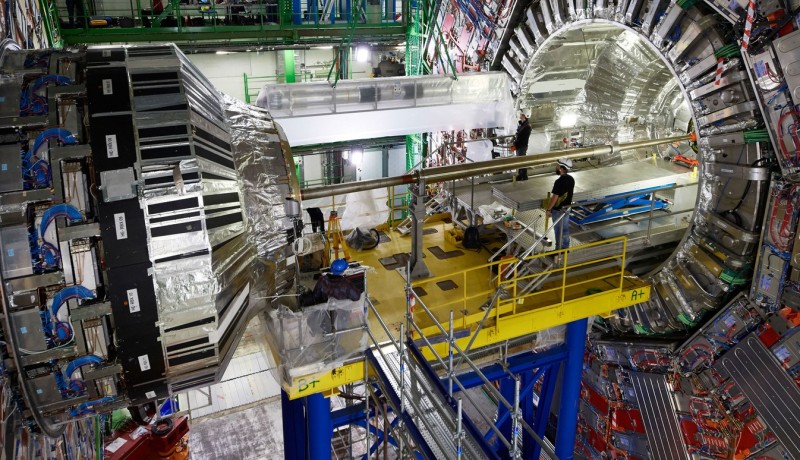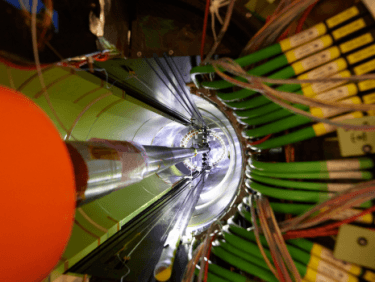40 million frames per second
on

The CMS-detector (Compact Muon Solenoid Experiment) of the Large Hadron Collider at CERN in Geneva has recently received a 'heart transplant': this experiment has now received a new pixeldetector which, if it was compared to a digital high-speed camera, can record up to 40 million frames per second.
This is one of the pair of detectors that in 2012 caused a sensation by (finally) demonstrating the existence of the Higgs-boson, the existence of which was already predicted during the 60's of the previous century by theoretical physicists and plays a crucial role in the so-called standard model of particle physics.

The CMS-experiment is one of the four big experiments of the Large Hadron Collider – the largest and most powerful particle accelerator in the world. In the 27-kilometer long LHC, 100-meter deep underground tunnel, by the gates of Geneva, the detector records what happens when (subatomic) particles collide with each other at nearly the speed of light.
One can imagine that the pixel detector as somewhat similar to a digital camera – but one that can record at 40 million frames per second. When the electrically charged particles resulting from the collisions pass through the silicon layers inside the detector they cause local reversible disturbances which are called electron/hole pairs. When the electrons subsequently reach the sensor, the researchers can record the signal, digitize the data and determine the spacial coordinates of the collision. The data collected in this manner helps the researchers understand how nature around us functions at the subatomic scale and how the various elementary particles interact with each other.


Discussion (0 comments)